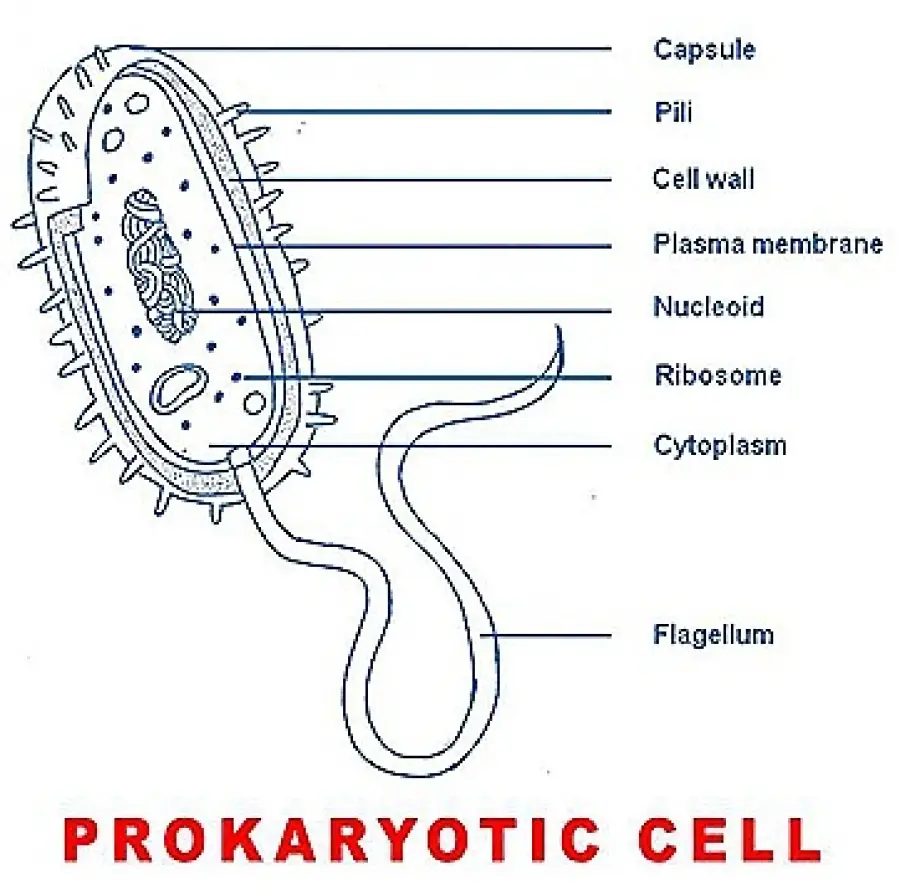
Prokaryotic Cell Biology Major Microbiology Biology
All of them have four primary components described below: The plasma membrane: is an outer layer that differentiates the interior of the cell from the external environment. Cytoplasm: It is filled with cytosol having jelly-like consistency. It also has cellular organelles suspended in the cytoplasm.

Learn About Prokaryotic Cells, Prokaryotes Bacteria and Archaeans Prokaryotic cell, Cell
Eukaryotic cell: Prokaryotic cell: Size: Most are 5 μm - 100 μm: Most are 0.2 μm - 2.0 μm: Outer layers of cell: Cell membrane - surrounded by cell wall in plants and fungi

Draw neat labelled diagrams of a Eukaryotic and a Prokaryotic cell. Also colour and label it
Features of Prokaryotic cell: Prokaryotic cells are very small in size (0.1-0.3 μm). The cell is formed of peptidoglycan (like - Bacteria, Blue-green algae). Absence of membrane-bound cell organelles. Like - Mitochondria, Golgi bodies, endoplasmic reticulum, plastids, lysosomes, etc. In some cases single-membered photosynthetic lamellae.

draw a well labelled diagram of a typical prokaryotic cell. write five points about how it
By Regina Bailey Updated on October 30, 2019 Prokaryotes are single-celled organisms that are the earliest and most primitive forms of life on earth. As organized in the Three Domain System, prokaryotes include bacteria and archaeans. Some prokaryotes, such as cyanobacteria, are photosynthetic organisms and are capable of photosynthesis .

Pin by Magpie on ชีวะ Prokaryotic cell, Eukaryotic cell, Prokaryotic cell model
Two Types of Cells. There is another basic cell structure that is present in many but not all living cells: the nucleus. The nucleus of a cell is a structure in the cytoplasm that is surrounded by a membrane (the nuclear membrane) and contains, and protects, most of the cell's DNA. Based on whether they have a nucleus, there are two basic types of cells: prokaryotic cells and eukaryotic cells.
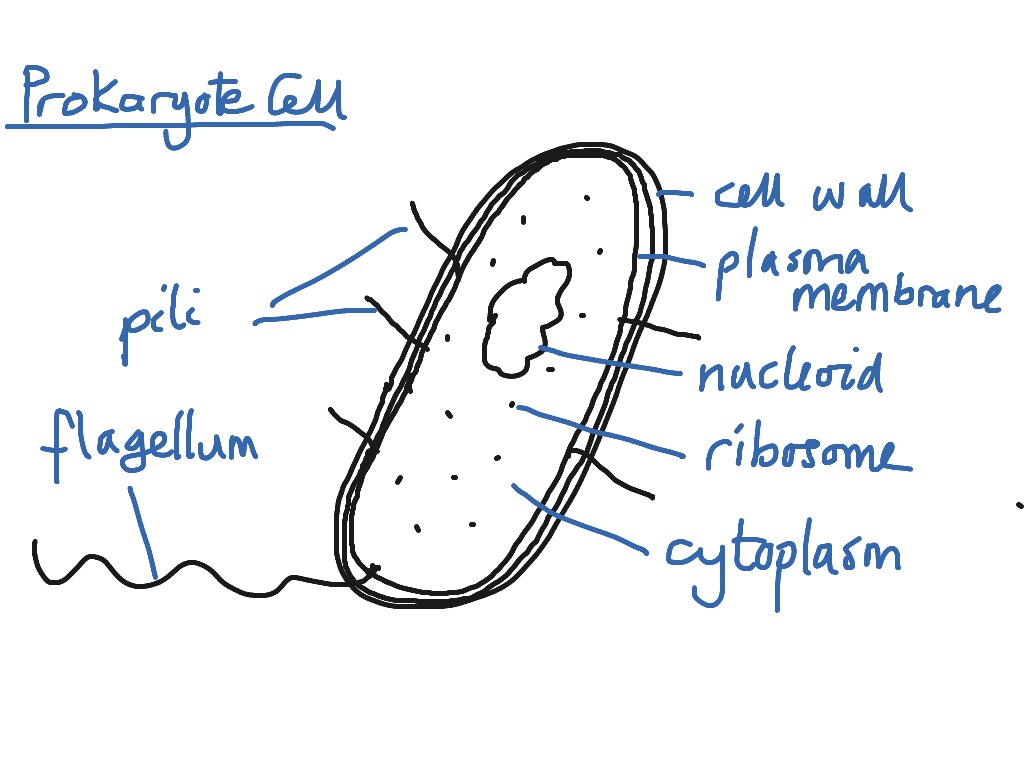
Prokaryotic Cell Diagram With Labels General Wiring Diagram
89 Similar questions Q. Draw a well labelled diagram of a prokaryotic cell. Q. Draw a well labelled diagram of dry cell and explain its construction. Q. Define cell constant. Draw a neat and well labelled diagram of primary reference electrode. Q. Draw a well labelled diagram of animal cell and mention one function of the main cell organelles.

Goes over the structure of prokaryotic cells. Life Science Middle School, Upper Elementary
Figure 27.2. 2: The features of a typical prokaryotic cell are shown. Recall that prokaryotes are divided into two different domains, Bacteria and Archaea, which together with Eukarya, comprise the three domains of life (Figure 27.2. 3 ). Figure 27.2. 3: Bacteria and Archaea are both prokaryotes but differ enough to be placed in separate domains.
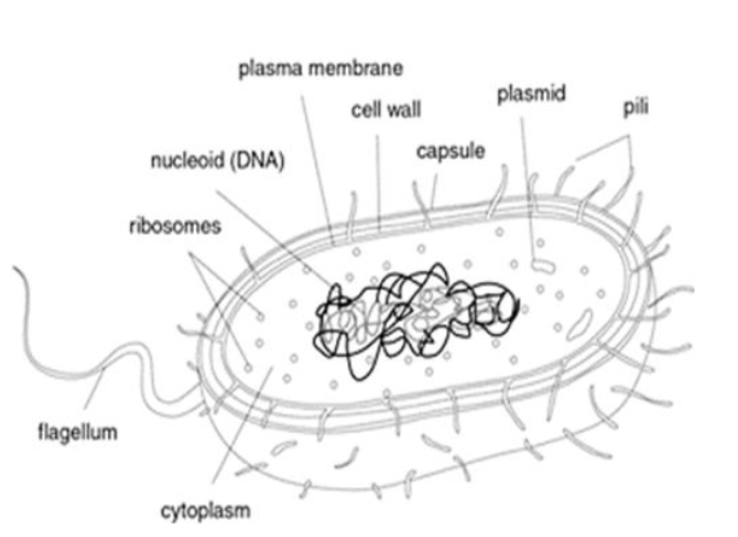
Class 11 Medical Biology Cell The Unit Of Life
Here I'll draw Diagrams of each and every topic in biology that will help you to draw diagrams and to revision diagrams. It might helpful in your.more.more

Prokaryotic Cell Diagram
Here we have shown a well-labeled diagram of a prokaryotic cell. This diagrammatic representation of the prokaryotic cell will help you to understand the prokaryotic cell. Characteristics of Prokaryotic Cells

Labeled Prokaryotic Cell Diagram, Definition, Parts and Function Biology Brain
A prokaryote is a simple, single-celled organism that lacks a nucleus and membrane-bound organelles.
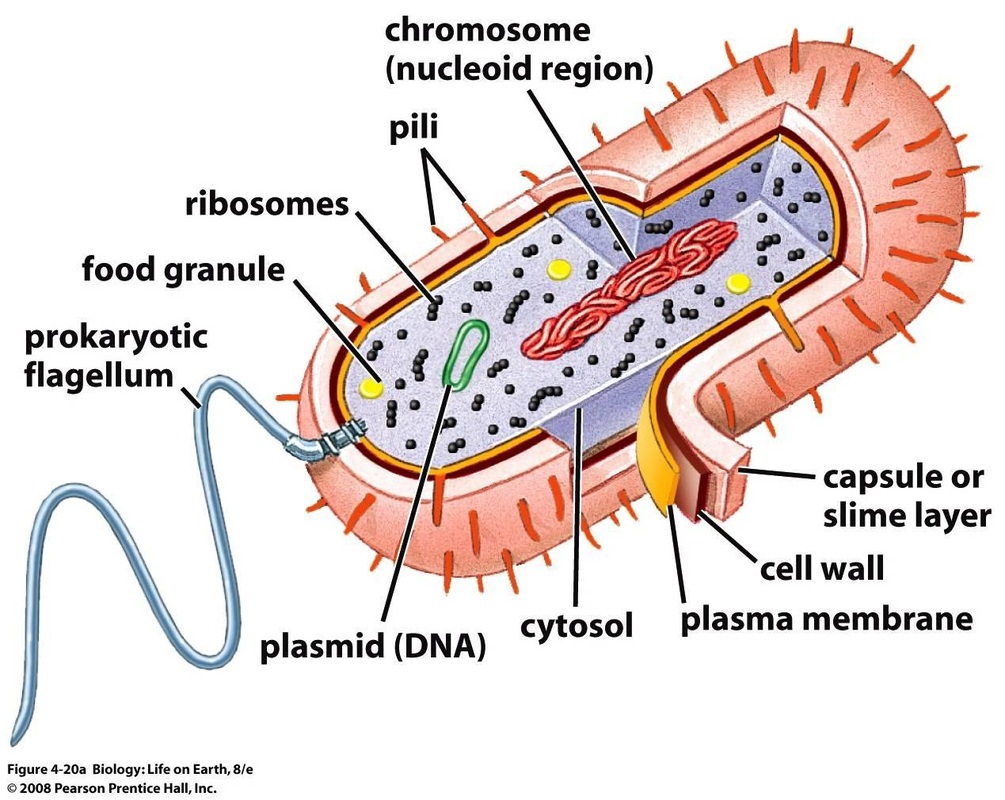
Prokaryotic Cells
Prokaryotes lack an organized nucleus and other membrane-bound organelles. Prokaryotic DNA is found in a central part of the cell called the nucleoid. The cell wall of a prokaryote acts as an extra layer of protection, helps maintain cell shape, and prevents dehydration. Prokaryotic cell size ranges from 0.1 to 5.0 μm in diameter.
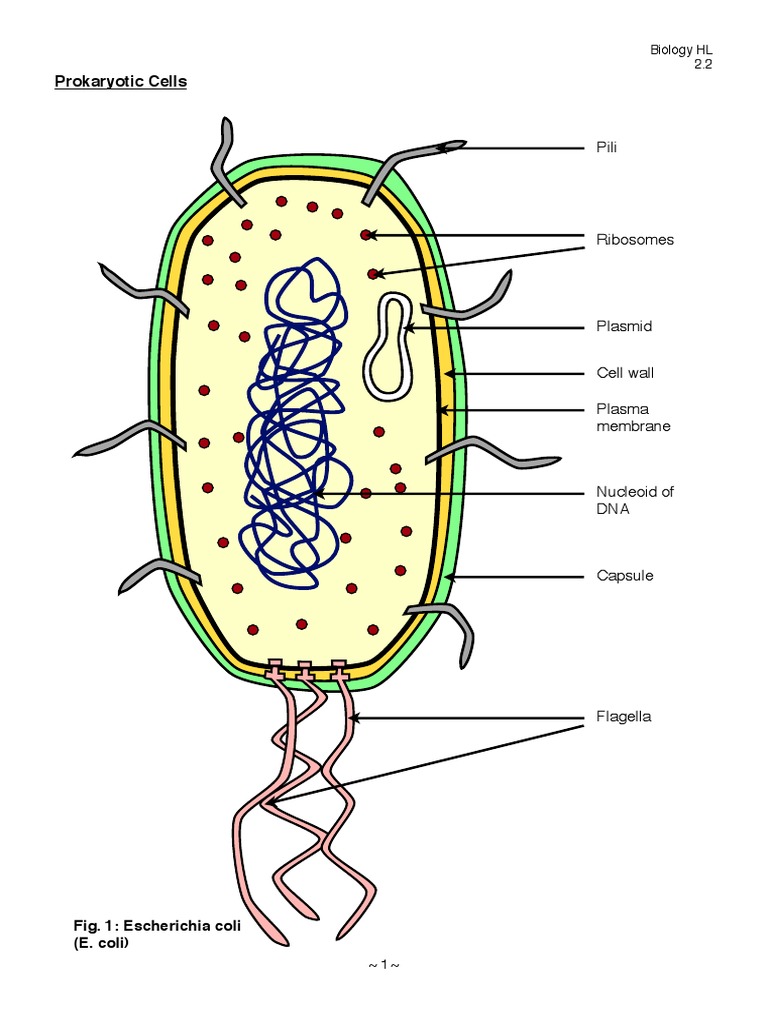
IB Biology Notes Prokaryotic Cells Prokaryote Cell (Biology)
Prokaryotic cell refers to the cell which is unicellular, i.e. made of a single cell. Prokaryotic means "pro" = primitive and "karyos" = nucleus, i.e. prokaryotic cell refers to the cell which has a primitive nucleus. Bacteria and Archaea come under prokaryotes. Characteristics of Prokaryotic Cell
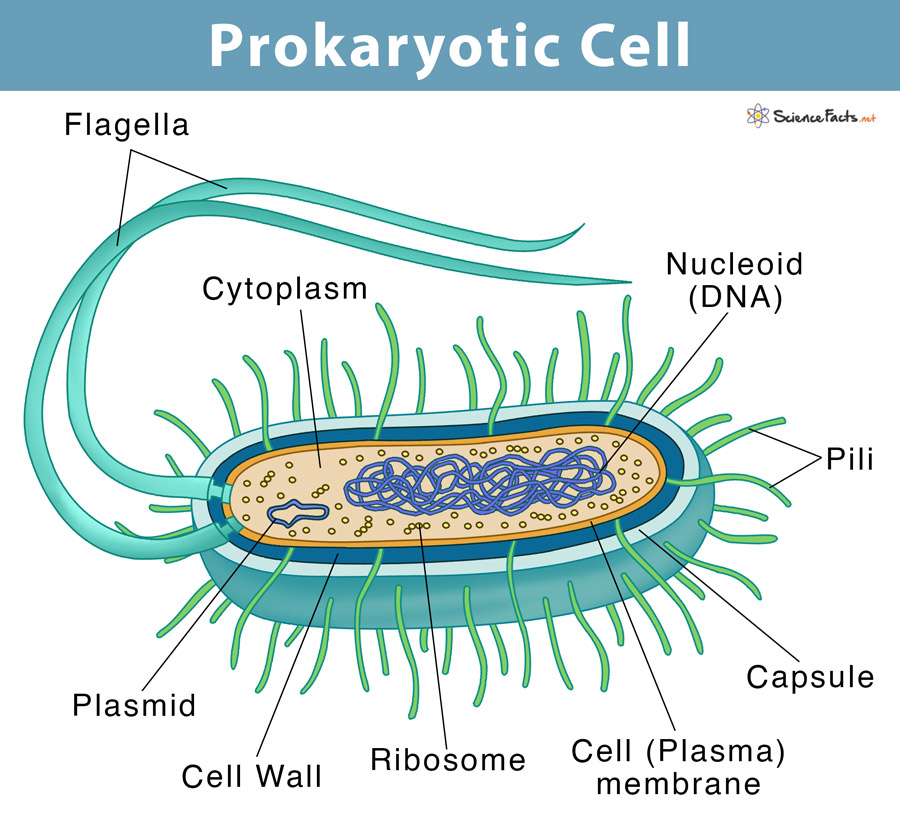
Prokaryotic Cell Definition, Examples, & Structure
Prokaryotes are one of the most ancient groups of living organisms on earth, with fossil records dating back to almost 3.5 billion years ago. These prokaryotes thrived in the earth's ancient environment, some using up chemical energy and others using the sun's energy. These extremophiles thrived for millions of years, evolving and adapting.
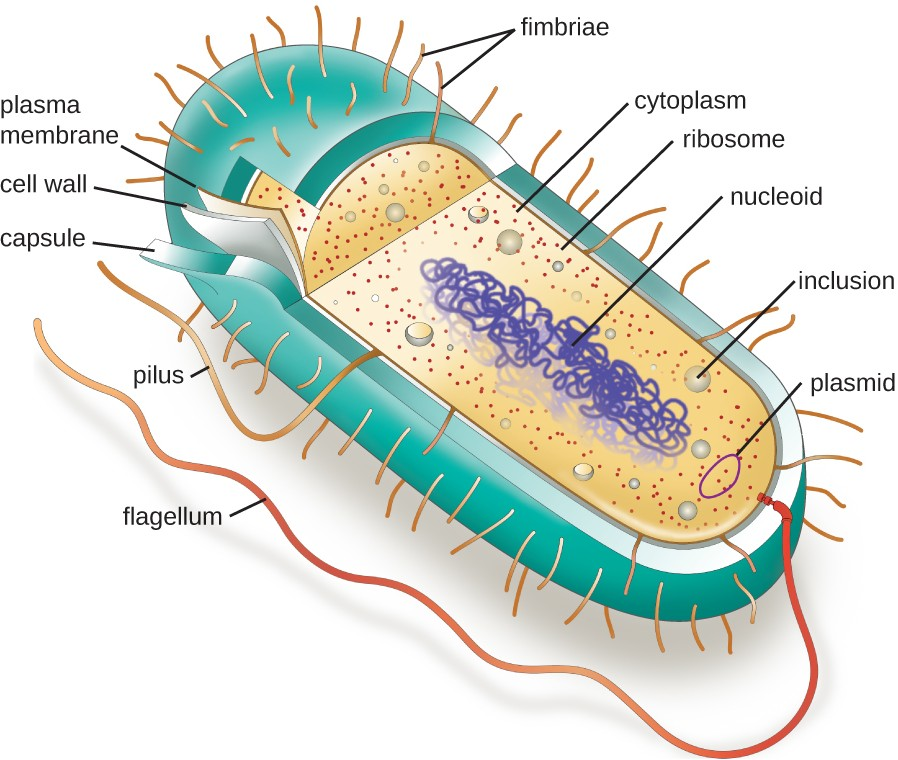
2.3 Unique Characteristics of Prokaryotic Cells Allied Health Microbiology
Definition A prokaryotic cell is a type of cell that does not have a true nucleus or membrane-bound organelles. Organisms within the domains Bacteria and Archaea are based on the prokaryotic cell, while all other forms of life are eukaryotic. However, organisms with prokaryotic cells are very abundant and make up much of Earth's biomass. Overview

Draw a well labelled diagram of a prokaryotic cell Brainly.in
Explanation Characteristics Structure Diagram Components Reproduction Examples What is a Prokaryotic Cell? Prokaryotic cells are single-celled microorganisms known to be the earliest on earth. Prokaryotes include Bacteria and Archaea. The photosynthetic prokaryotes include cyanobacteria that perform photosynthesis.

Simple Prokaryotic Cell Diagram
Archaea Archaea, like bacteria, are single-celled organisms without a nucleus. While they look similar to bacteria, they are genetically and biochemically distinct. Scientists discovered archaea in extreme environments, such as hot springs or salty lakes, but they inhabit a wide range of environments.